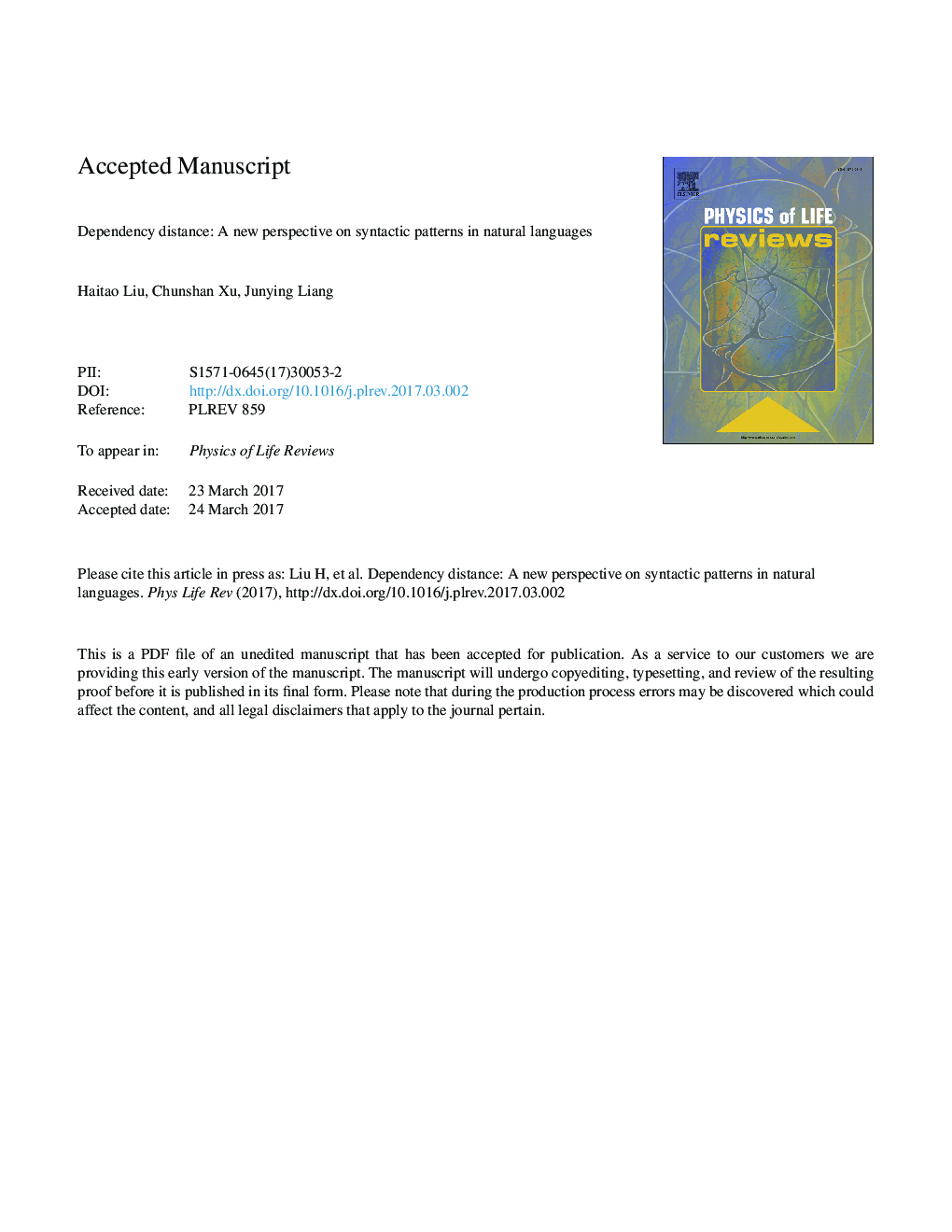| Article ID | Journal | Published Year | Pages | File Type |
|---|---|---|---|---|
| 8207060 | Physics of Life Reviews | 2017 | 58 Pages |
Abstract
Dependency distance, measured by the linear distance between two syntactically related words in a sentence, is generally held as an important index of memory burden and an indicator of syntactic difficulty. Since this constraint of memory is common for all human beings, there may well be a universal preference for dependency distance minimization (DDM) for the sake of reducing memory burden. This human-driven language universal is supported by big data analyses of various corpora that consistently report shorter overall dependency distance in natural languages than in artificial random languages and long-tailed distributions featuring a majority of short dependencies and a minority of long ones. Human languages, as complex systems, seem to have evolved to come up with diverse syntactic patterns under the universal pressure for dependency distance minimization. However, there always exist a small number of long-distance dependencies in natural languages, which may reflect some other biological or functional constraints. Language system may adapt itself to these sporadic long-distance dependencies. It is these universal constraints that have shaped such a rich diversity of syntactic patterns in human languages.
Keywords
Related Topics
Physical Sciences and Engineering
Physics and Astronomy
Physics and Astronomy (General)
Authors
Haitao Liu, Chunshan Xu, Junying Liang,
